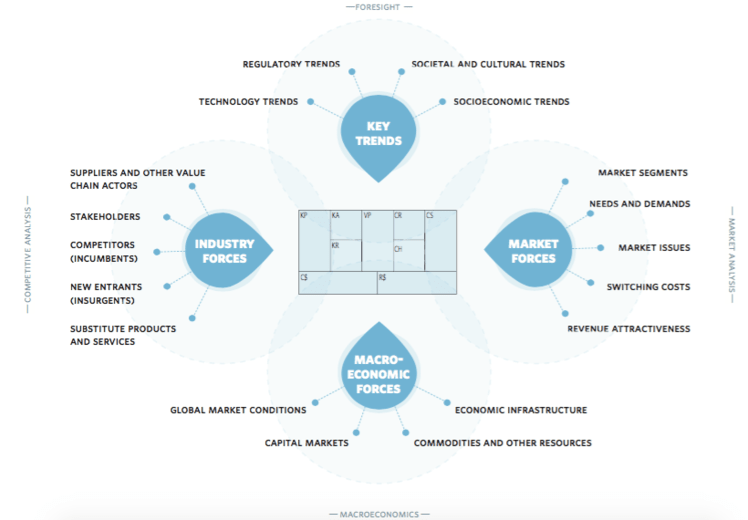How To Make Good Decisions With The Business Model Canvas
You’ve filled in the canvas, now what?
Now that we’re all on the same page, your canvas lets you make great business decisions.
It lays all of the components on the table for everyone to see, allowing you to spot issues and opportunities, then design new versions of the model that can be tested in the real world.
We need to first understand why the model does/doesn’t work today, in order to create even stronger models for the future.
The first step here is Triage.
This comes from the French for “dividing into three categories”, a technique pioneered by battlefield medics.
Triage separated out those who were highly likely to survive, those who were wounded beyond help, and the vital third category – those who can be saved with fast action.
e.g. the ideas that have a chance of succeeding with the right mix of creativity, diligence – this is where innovation lives.
You want to look over your canvas and identify the elements that are going well, those that are going terribly, and those that are on the line.
You can read more about this process in this free eBook.
The next step is to divide the business units / menu items into three buckets:
Cash Cows (which make a good margin)
Small Margins (which pay their own way)
Loss Leaders (which lead to future work)
Most businesses feature a balance of all three – all the work is important, but not all of the work creates an equal contribution to the bottom line.
By identifying the mix today, we can spot opportunities for improvement.
Perhaps you have no cash cows, and aren’t sure they even exist.
Perhaps you have small margins that can be improved.
Perhaps you have loss leaders that don’t currently lead to anything.
Five Checkpoints Before You Move On
These tests will help you make the most out of the canvas, drawing valuable details and context to the surface.
1. Is the model as clear as possible?
Can you simplify the language so that your mother would understand how the business works?
She’s a smart woman, if it’s unclear to her then it’s your fault.
2. Can we improve our descriptions?
Are there shorthand terms that can be clarified, giving richer detail around customers and value propositions?
3. Are we being as honest as possible about our numbers?
Are we factoring in all of the costs associated with running the business?
Are we taking the best case scenario and pretending it’s the norm?
4. Have we recorded the circumstances under which the model has worked?
Are we documenting the scenarios that created happy customers?
5. Have we identified the difference between dormant and disproved?
Are some parts of the model proven not to work?
Are parts of the model potentially able to succeed if they were given more love and attention?
Designing The Future
Where do you see the business going in the next few years?
What are some scenarios that should be explored in more detail?
The canvas allows us to sketch out new ideas using familiar terminology – the small boxes allow you to think big about the concepts.
Some changes might include:
Pursuing a different customer – someone who isn’t a customer today, or whose needs are about to change
Designing different products and services – new menu items that scratch a different customer itch, or which are superior to what’s available today
Changing your brand’s positioning – moving to a different part of your customer’s brain, with the intent of shifting how you’re perceived
Developing different channels to better attract and serve customers – finding better ways to attract attention and deliver a remarkable experience
Changing the structure of your business – moving to a different part of the value chain, or changing the way in which you meet customer’s needs
Forming different partnerships – identifying win-win outsourcing arrangements or deciding to pull a process in-house
Designing new ways of nudging customers – changing the business in order to change the way customers think and behave (hopefully for the better)
Using this list, what might be in the three buckets in the future?
Are there business units that might be discontinued?
Are there business units that can push the balance towards greater financial sustainability?
Conditions For Success
Once you’ve started to sketch out these ideas, we can begin to determine the conditions for their success.
This is made easier if you adopt an attitude of “Yes if…” and “We can if…”.
Instead of jumping to reasons why an idea won’t work, we instead use our creativity to identify the circumstances under which the idea could thrive.
It may well be that we think the circumstances are unlikely or costly, and that’s ok.
At least each concept is given a fair hearing.
e.g. We can if we hire a…
We can if we partner with a…
We can if it gives customers a higher level of…
We can if each unit can cost less than…
Next, we want to identify the model’s sensitivities – areas in which a small change has a disproportionately large impact.
Does the departure of one staff member derail the whole business?
Will a single customer be responsible for over 40% of your income?
Are you dependent on a key partner?
Would a small increase in material costs erode the majority of your profits?
Could a change in legislation ruin your model?
A way of thinking about this is with an Ante Mortem – determining the potential “cause of death” before it has the chance to happen.
What might knock the business over?
What could your competitors do, if they were clever?
By thinking about this now, we can actively patch up the gaps in our armour, and reduce the likelihood of a small change ruining the business.
Does It Achieve My Mission?
Some smarty-pants consultant can show you how to make more money, but there’s a good chance that their methodologies kill the joy in running the business.
It’s important to check that these new models deliver on your intent, and that they give you whatever is motivating you.
Maybe it’s the freedom of being your own boss.
Maybe it’s the love of the craft, and doing things well is more important than squeezing the life out of every dollar.
Maybe it’s your social mission, and the change you want to see in the world.
In each of these circumstances, money doesn’t guarantee satisfaction.
We want to check that growing the business also grows your happiness – otherwise it’s not a truly great model.
Checking The Balance
What combination of business units/products/activities will work well together?
It’s important to think through the way in which different parts of your business help and hinder each other.
Perhaps your high-end work gives you the credibility to sell your mass produced goods.
It might be that you have a double sided market, and both sides need to scale up at the same time.
Maybe the resources from one business are essential for others, and the decision to chop off a loss leader hurts your cash cows.
Think about the implications your decisions have on your financials, your brand and your staffing – all three must be in harmony.
A change might look good on a spreadsheet, but it damages your reputation for your core value proposition.
e.g. switching to cheaper ingredients will save money, at the expense of future sales.
Alternatively, you might grow/shrink the business, then have a staffing shortage/surplus that wipes out all of the economic benefits of the initial decision.
Validating/Disproving Assumptions
Once you have an idea for your future business models, the most valuable use of your time is to design a test that validates or disproves the most crucial assumptions.
The wonderful part about testing is its win-win nature; you either confirm that your idea will work, or you save a tremendous amount of time and money from a cheap failure.
The secret to these tests is to identify the hidden assumptions that are critical to your success, or in other words, that you test the hard part first.
My suggestion is to pick at least one assumption about the right hand side, left hand side and bottom line of the canvas, and fill in a Test Card for each of them.
e.g. We believe that customers will switch brands if we offer…
We believe that we can find talented staff in each city for $28 per hour…
We believe that a breakeven of 80 widgets sold per day is consistently achievable…
Canvases aren’t magic, but they’re clear.
This clarity brings your assumptions into the light, and allows other people to point out lucrative opportunities for you to explore.
This process involves juggling lots of ideas in the air at once, but also ensures that only validated ideas proceed to the next stage.
Better yet, this process highlights the specific areas which need a specialist’s input, so you can make faster and better decisions on where to invest your time and money.











